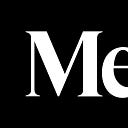How to finish that thing you’ve been working on
🏊 Today is the 7th day of the Paris Paralympic Games, featuring 549 events across 22 sports — including powerlifting, ice sledge hockey, freestyle swim, and para dance
Issue #155: becoming unhackable and clocking your flaws
By Harris Sockel
Most writers (and artists of all stripes) are great starters and terrible finishers. Years ago, someone told me the best piece of writing advice they ever heard was “finish things.” Just finish them!
But how?
Artist and designer James Buckhouse, who founded the Sequoia Design Lab and got his start punching up scripts for Shrek and the Matrix trilogy, posted on Medium last year about this very question, and I’ve been turning his conclusions over in my head ever since.
Buckhouse spoke to his most creative friends — Oscar winners, CEOs, artists, an arctic explorer — about how they navigate the tension between starting and finishing. All of them said they cherish deadlines (“deadlines=lifelines”).
They also helped him land on a mantra: creative diligence. From what I gather, creative diligence is about combining curiosity with action to get things done. It’s the technique Buckhouse believes drove Leonardo da Vinci, who always began a project by asking himself how something worked. (He dissected horses before designing a horse sculpture.) Writing a poem? Read 100 great poems and dissect them one by one to learn why they’re effective.
And if you get stuck? Stop. Ask yourself what exactly isn’t working. If you’re writing something, maybe it’s the structure, or a single word or sentence that led you down a blind alley.
One last piece of related advice, from this story by Buckhouse about the definition of creativity: “Art is not about decadence, hipness or living life on the edge, art is about pushing your mind as far as it will go and then to observe what is on the other side.” Creativity emerges from curiosity.
🔒 From the archive: How to be unhackable
Data scientist and researcher Dylan Hudson explains why all our “tricks” to make passwords less crackable (use at least one capital letter! put some p*nctua%tion in there!) don’t actually work: humans are pretty similar, and our passwords tend to be, too. If you’re not going to use a password generator like 1Password, the next best options are to:
- Use nonsensical phrases (“parkinglot-bathtub-arboretum”)
- Place capital letters in the middle (“parkingLot-bathtub-ARBORetum”)
- Use non-sequential numbers and an array of symbols (“parkingLot%bath395tub@@&ARBORetum”)
- Don’t use any identifying information about you or the site/service (do NOT put “facebook” in your Facebook password)
Your daily dose of practical wisdom: on clocking your flaws
It’s far easier for us to recognize others’ weaknesses than to see our own. What’s obvious to others (so-and-so always talks too much, or they always need to be right, or they’re too defensive) can be invisible to us, and you can’t work on what you don’t name.
To figure out your flaws, identify patterns. If you tend to always run into the same problems, chances are they’re pointing toward an underlying weakness.
Learn something new every day with the Medium Newsletter. Sign up here.
Edited and produced by Scott Lamb & Carly Rose Gillis
Questions, feedback, or story suggestions? Email us: tips@medium.com

